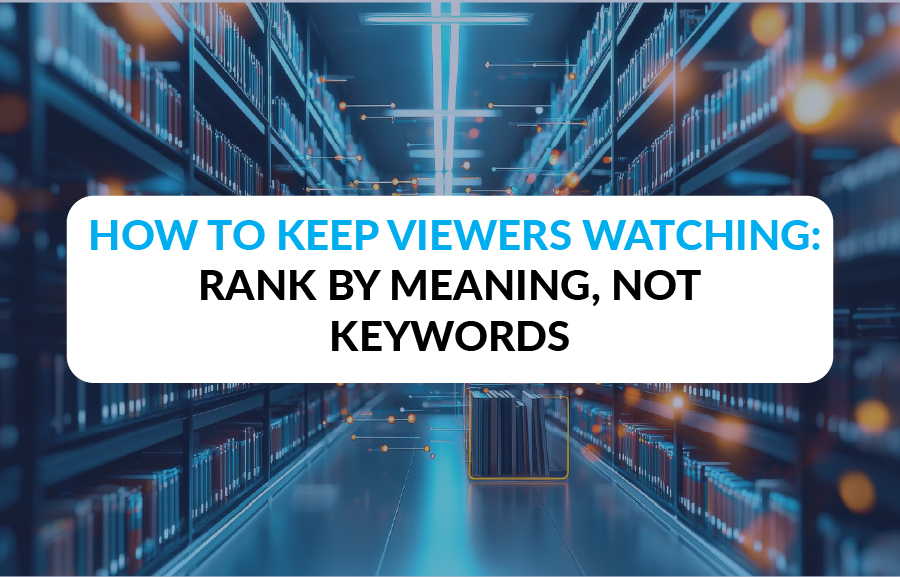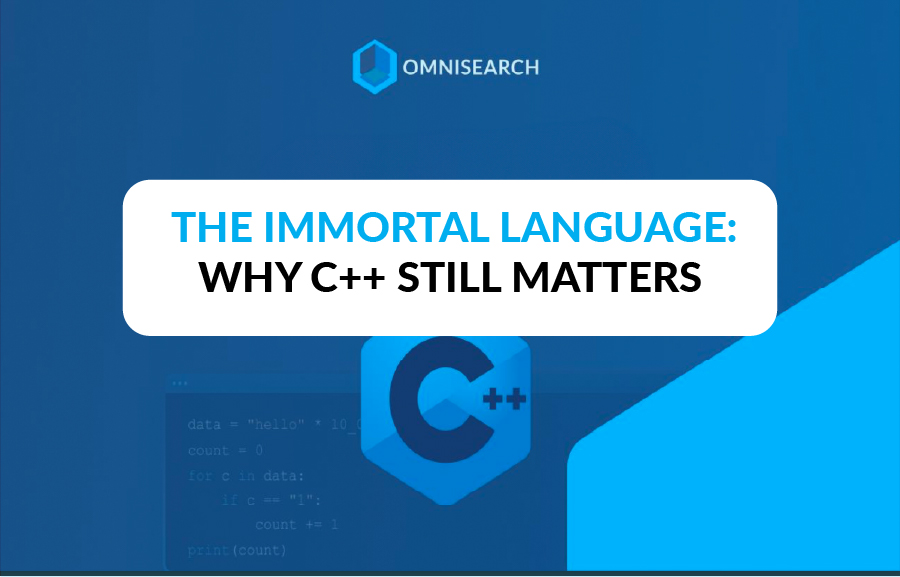Technology, digital transformation and Artificial Intelligence in the Supply Chain
No items found.
Published:
August 20, 2024
Topic:
Use cases

Technology, digital transformation, artificial intelligence – these are all terms that are mentioned, discussed, and contemplated. But what is artificial intelligence really? It is a system that seeks to mimic human intelligence when it comes to understanding text, searching, pattern recognition, problem-solving, reasoning, decision-making, and prediction. To make all of this possible, it is necessary to create large databases, have a strong technological infrastructure, and develop efficient algorithms.
So, what does this mean for supply chain management? To answer this question, let's start from the beginning. There are various definitions of the supply chain, but many emphasize that it is the flow of materials, goods, services, and information. Some definitions also include financial flows, and, of course, specific aspects for each industry can be added. So, what happens on a daily basis with these flows? At every point, we balance between efficiency and effectiveness, aiming to maximize service levels and minimize costs. How do we do this? By applying supply chain management strategies: supplier management, procurement, transportation, warehousing, inventory management, production, distribution, and demand management. Lately, much emphasis has been placed on sustainability, integration, coordination, and communication in the supply chain. So, how does artificial intelligence contribute to supply chain management?
Artificial intelligence can assist at every point in the supply chain. To make this possible, it is necessary to collect the necessary data at each point for algorithms to use. Table 1 lists some commonly collected data points at different stages in the supply chain.

Suppliers
- Master data
- Price
- Quality
- Technical product/service characteristics
- Delivery lead time
- Percentage of damaged products
- Flexibility
- Sustainable business practices
- Social responsibility
- Green practices
- Security
- Delivery method
- Ancillary services
Transportation/Distribution
- Unit transportation cost
- Fixed transportation cost
- Transport capacity
- Location of warehouses, distribution centers, and stores
- Distances and locations
- Traffic data
- Weather conditions
Warehousing/Inventory
- SKU codes
- Forecasted demand
- Historical demand
- Supplier delivery lead times
- Raw material prices
- Unit holding cost
- Unit delivery cost
- Warehouse capacity
- Warehouse layout (alignment with store layout)
- Yard management-relevant data
- Transport capacity
- Bill of materials for MRP
Production of Goods and Services
- Forecasted demand
- Historical demand
- Raw material prices
- Unit holding cost
- Unit delivery cost
- Unit production cost
- Unit labor cost
- Unit outsourcing cost
- Unit overtime cost
- Warehouse capacity
- Transport capacity
- Production capacity
Demand Forecasting
- Historical sales data
- Historical demand data (missed sales)
- Historical forecasted values
- Consumer/customer habits
- Location of demand occurrence
- Time/moment of demand occurrence
- Macroeconomic indicators
- Special events (sports competitions, cultural events, Advent)
- Meteorological conditions
Artificial intelligence searches, processes, and analyzes data, simulates, runs algorithms, solves problems, draws conclusions, makes decisions, and communicates.
Suppliers and Procurement
Supplier relationship management and procurement processes involve defining selection criteria, supplier selection, negotiation, and purchase decision-making. Artificial intelligence utilizes historical data on supplier behavior, their reliability regarding delivery times, accurate quantities, maintenance, and all elements that are of interest to a particular company. Based on this, algorithms calculate the most economically advantageous offer, the total cost of ownership, and other items needed for purchase decision-making. Users can ask questions and make additional requests, and artificial intelligence responds based on the knowledge gathered from the past. The larger the database, the more precise the answers and information obtained. Algorithms then automatically create purchase orders, delivery notes, and other documentation.
Transportation and Distribution
Artificial intelligence conducts optimization of loading, transport routes, combined cargo, modular transportation, using algorithms and continually adapting to situations, sometimes in real-time, based on data about weather conditions, traffic, and unexpected obstacles. Artificial intelligence contributes to timely deliveries, cost reduction, fuel consumption, and carbon footprint reduction. The development of autonomous vehicles and drones for transportation and delivery is also progressing daily. As end customers, we witness various applications that allow us to track our packages, flights, buses, and make purchases of tickets, goods, and services.
Warehousing and Inventory
Optimal shelf and storage location layouts to minimize forklift travel, all related to predicting the demand for a specific product; loading by product or delivery location; the order of stacking products on carts in the warehouse, which aligns with the order of stacking these same products on store shelves. These are all processes managed by artificial intelligence. Forklift robots and drones contribute to more precise selection, loading, sorting, and packaging. Internet of Things (IoT) also plays a significant role here.
Inventory management ensures optimal product quantities in the warehouse and contributes to balancing supply and demand. Artificial intelligence predicts demand and, based on this data and other relevant parameters, calculates order quantities and frequencies, balancing between cost minimization and service level maximization. Orders are automatically generated and sent to suppliers through the system, with accompanying documentation created along the way.
Aggregate Planning and Production
Based on forecasted demand, plans for resource and capacity utilization are created at the aggregate, master, and micro levels, taking into account satisfying demand and minimizing costs. Artificial intelligence monitors processes and adjusts to new situations in the case of unforeseen events, allowing for an agile and flexible process with minimized idle time. Different scenarios are developed and tested through simulations, taking into account supplier reliability and transport capacity.
Demand Forecasting
In terms of the supply chain, machine learning was first associated with demand forecasting. There are various well-known methods for forecasting, but machine learning optimally combines them, collects data and experience from customer relationship management, and practically adjusts forecasts in real-time. For instance, the popular Chat GPT can be effectively used for communication with customers and through chatbots, valuable information for predicting customer needs and trends can be obtained. Based on this information, customer loyalty programs and personalized approaches can be created. More accurate forecasts then lead to improved inventory and warehouse management, as well as better resource and capacity planning. In summary, artificial intelligence continuously improves the balance between supply and demand.
Supply Chain Security and Visibility
By creating databases, artificial intelligence documents the trace of all activities in the supply chain, contributing to transparency and fast reporting. Various protections are used to ensure data security, including blockchain. Blockchain is mainly associated with security in the field of finance and cryptocurrencies, but the concept is the same. Blockchain is simply a technology used to record and protect all activities in a process.
After the pandemic, companies have become increasingly interested in the possibility of end-to-end visibility from third or even fourth-tier suppliers to third or fourth-tier customers. Artificial intelligence can enable all of this.
Integration and Coordination in the Supply Chain
Flows in the supply chain need to be supported and improved. This is made easier with advanced technology and artificial intelligence. For example, Chat GPT can be used not only for communication with customers but also for internal communication and knowledge exchange among supply chain stakeholders. It all depends on which database is used. More sophisticated KPIs can be defined with integrated flows, containing, for example, procurement and sales results together. With artificial intelligence and integration, the contribution of each member in the chain can be easily calculated. Deep learning and root-cause analysis can be employed. A joint KPI can be greater than the sum of individual procurement and sales KPIs, and artificial intelligence algorithms can provide data on contributions, which can be used to create reward systems.

Various software and some form of artificial intelligence have been used for a while. However, these software solutions were not connected, and computers were not fast enough or didn't have the processing capacity for analyzing large volumes of data. Now, all of this is possible, and implementing artificial intelligence is actually a necessity if we want to remain competitive. Of course, artificial intelligence must be carefully considered, a regulatory framework must be established, and it should be used to create a better environment. We, as individuals, must adapt, educate ourselves, and continually develop. Operational processes in the supply chain will be managed by artificial intelligence, while employees need to focus on developing creativity, innovation, empathy, emotional intelligence, and positive energy.
This article was written by Kristina Sorić, PhD in Supply Chain Management and Professor at RIT Croatia. She is the owner at Luyouma Business Advisory Services and Supply Chain Management.
Watch Kristina talk about Supply Chain management on the AI Searched podcast:
This podcast was brought to you by Omnisearch and Playbox Production






